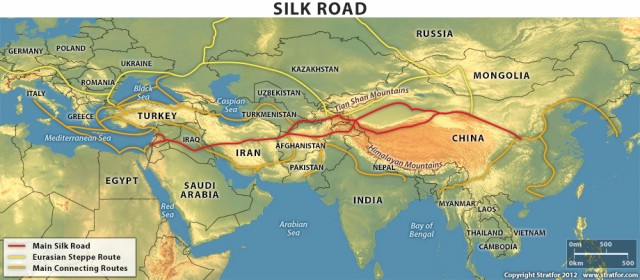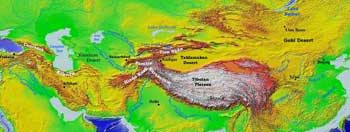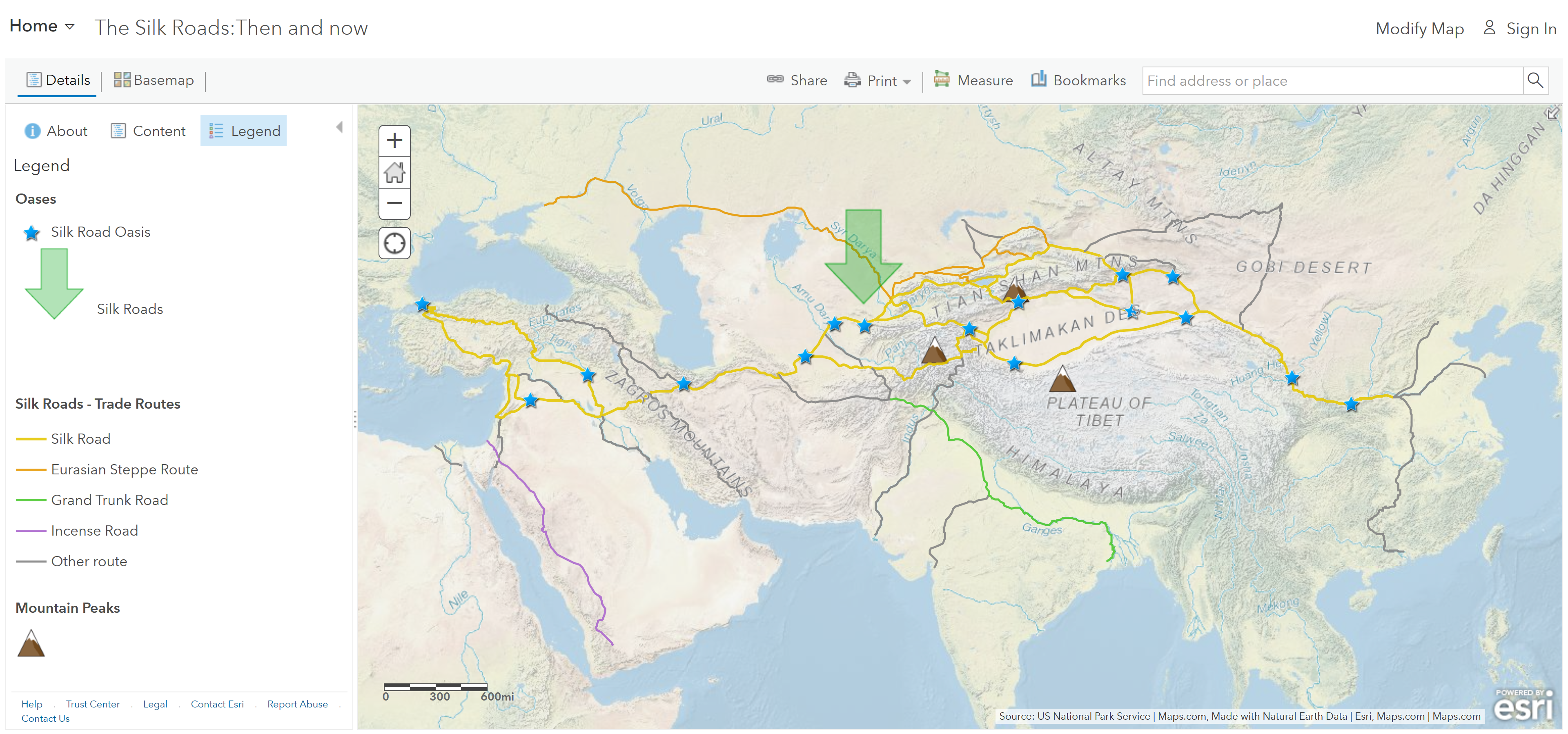The Silk Road is the name given to a series of trade routes formally established during the Han Dynasty around 200 BC. The Silk Road was a trade route that went from China to Eastern Europe.

Return Of The Silk Road Geographical Magazine
Other goods were transported via the Silk Road including precious metals perfumes tea and spices.

. Its two most significant geographic features are Its remoteness from the sea hence the word Inner and thus very dry moisture-bearing winds from the ocean lose their wetness by the time they reach Inner Asia. The Silk Road had a few different geographical features for example the Syrian Desert the. The Silk Road consisted of several routes south of the Trans-Eurasian steppe belt through the deserts of Central Asia from the oasis of one trading center to the next.
The geography of the Silk Roads then is a complex interaction between the physical and climate zones of mountain steppe or grasslands and river valleys and oases which often are bounded by uninhabitable desert. From XianLuoyang through Central Asia and to Constantinople on the eastern edge of Europe the Silk Road covered about 6000 kilometers or 4000 miles. One of the silk roads geographical features.
Stretching across the centre of Eurasia from the Black Sea to the Himalayas the Silk Road was the major artery of world trade along which flowed silks and spices gold and jade teachings and technologies. The Silk Road was a network of trade routes connecting China and the Far East with the Middle East and Europe. The Maritime Silk Road went via seas to the Middle East and Europe.
BETWEEN MESOPOTAMIA and CHINA stretched Central Asia large barren hostilea wasteland. The Silk Road was the longest ancient overland trade route. From the time of the Roman Empire east and west have been connected by a web of trade routes known as the Silk Road.
It went along the northern borders of China India and Persia and ended up in Eastern Europe near todays Turkey and the Mediterranean Sea. The Concept of Asia. The Silk Road was a series of trade routes between Asia Europe and parts of Africa.
Marco Polo was the most famous Silk Road traderexplorer. The Silk Road was an ancient trading route that stretched across much of Asia from China to the Mediterranean Sea. The expansion of Scythian cultures stretching from the Hungarian plain and the Carpathian Mountains to the Chinese Kansu Corridor and linking the Middle East with Northern India and the Punjab undoubtedly played an important role in the development of the Silk Road.
The silk road was a famous land trade route that traversed Asia and connected Eurasia in ancient times. Geography ppt silk road. At the same time it promoted the trade between China and other countries in the world and achieved mutual benefit and reciprocity laying a good foundation for future cooperation.
An important result of the trade of many goods on the Silk Road was the exchange of inventions and ideas. Due to the open up of this international trade route frequent economical and cultural communication between oriental countries and western regions were achieved allowing people to exchange advanced technology and local products. The route was named for the profitable trade in Chinese silk which took place along much of its route.
The Silk Road was important to the Ottoman Safavid and Mughal Empires for three reasons. The Silk Road was a series of interconnected trade routes that crossed Asia from China to Syria and other destinations in the Middle East and Europe. With no one government to provide upkeep the roads were typically in.
Travel on the Silk Road was only possible because of the presence of oases along the route. It stretched for almost 8500 km. The Silk Road or Silk Route refers to a historical network of interlinking trade routes across the Afro-Eurasian landmass that connected East South and Western Asia with the Mediterranean and European world as well as parts of North and East Africa.
The ancient cities on the Silk Road such as Changan now Xian Luoyang and four counties in Hexinow Wuwei Zhangye Jiuquan and Dunhuang in Gansu province and ruins of the ancient Western Regions countries. Through this vast area the one link that allowed the two civilizations to trade with each other was the loosely defined cluster of trails known as the Silk Road. The land routes were supplemented by sea routes which extended from the Red Sea to.
Different authorities define the borders and number of. It expanded Chinas foreign economic trade and made the world know China. The eastern terminus was Changan modern Xian.
The reasons are trade money and how they get most of their trade from the Silk Road. Geographical Setting of the Silk Roads. Thus populations could be dispersed in the grasslands or concentrated in the oases and river valleys.
Established when the Han Dynasty in China officially opened trade with the West in. Silk Road tourism may include. Asia can be fruitfully thought of as the major part of a larger physical territory the continent of Eurasia.
This route traverses rolling mountains vast deserts and wide prairie from the central China to the western world. That connected ancient civilizations across Asia North Africa and Europe. The Silk Road grotto and Buddhist art treasures such as Dunhuang Cave Tianshui Maijishan Grottoes Yulin Grottoes.
These routes aided in establishing early global commerce as well as the dissemination of culture knowledge and technology. These are the reasons why the Silk Road was so important to these Empires because it supported the Economy to these Empires. The Silk Road extended approximately 6437 kilometers 4000 miles across some of the worlds most formidable landscapes including the Gobi Desert and the Pamir Mountains.
These routes served to enrich many people and many countries while also allowing people to share ideas and. Even today the Silk Road runs through one of the harshest desert environments in the world with little water or.



0 Comments